web frameworks in the real world
… or sort of the real world.
While searching for a Rust web framework for my next project, i came across a benchmarking site which tests the performance of existing web frameworks across many languages. Coming from python, a Rust framework should improve performance, or put another way, reduce resource requirements by up to 85x!
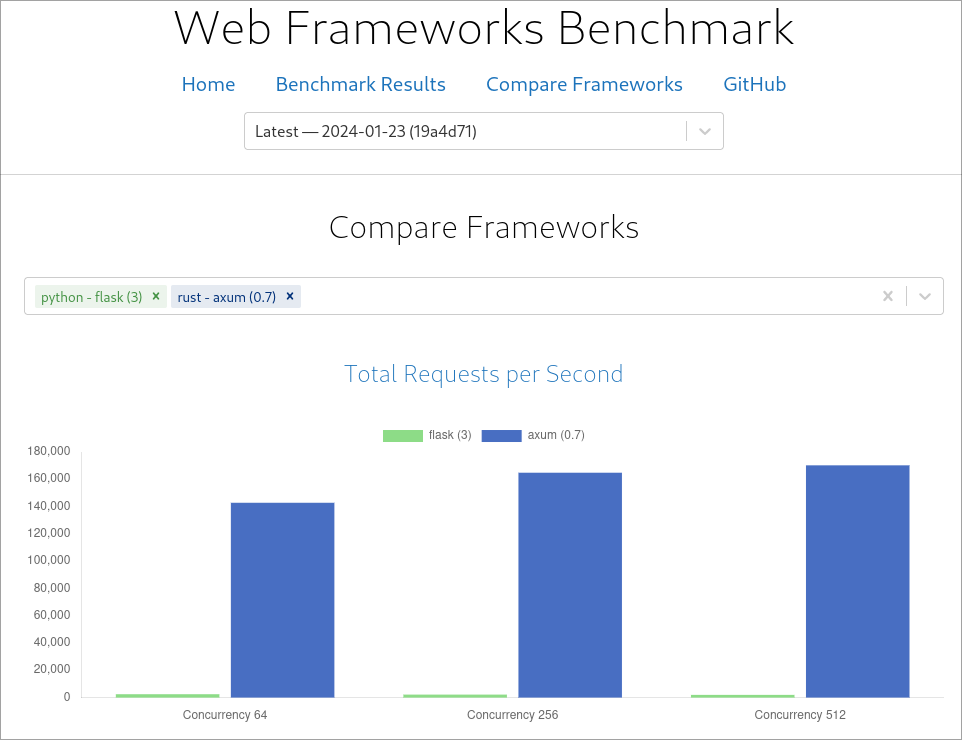
Since i’m porting a sample Flask app to Rust, here’s how 85x translates to the reality.
the setup
I’ve created a sample Flask app which leverages htmx as its frontend. It provides most of the functionality needed to build a (numerical) web app.
For the purposes of this benchmark, the python app uses:
- python 3.11.2
- apiflask 2.1
- pyarrow 15.0.0. (why didn’t i use polars? historically, i found pyarrow to be faster)
- requests 2.31
- gunicorn 21.2
- a bunch of flask libs
For Rust, there is a, as of the time of writing, much thinner sample app that provides the same views. It leverages:
- Rust 1.75
- Axum 0.7.4
- polars 0.36.2
- reqwest 0.11.23
- other libs
caveats
- everything is being run off a mildly overclocked, still unbearably slow, Raspberry Pi 4b with 8GB memory. absolute numbers will be much slower than expected.
- the only external network calls are to CDN providing JS and CSS. calls to web server are isolated to within a network/machine.
results
static page
The sample app provides a very simple home page which contains some text and pulls in the javascript and css dependencies.
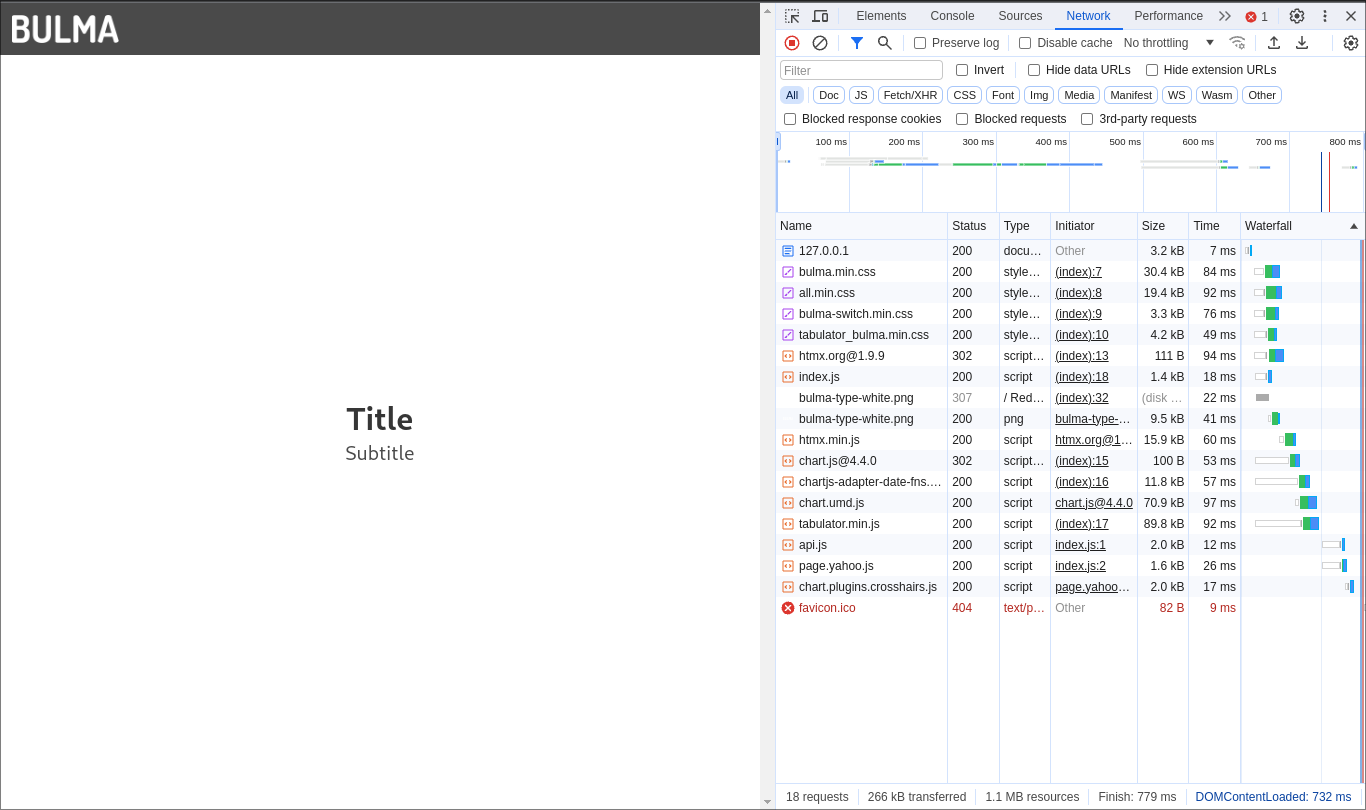 Axum static page performance
Axum static page performance
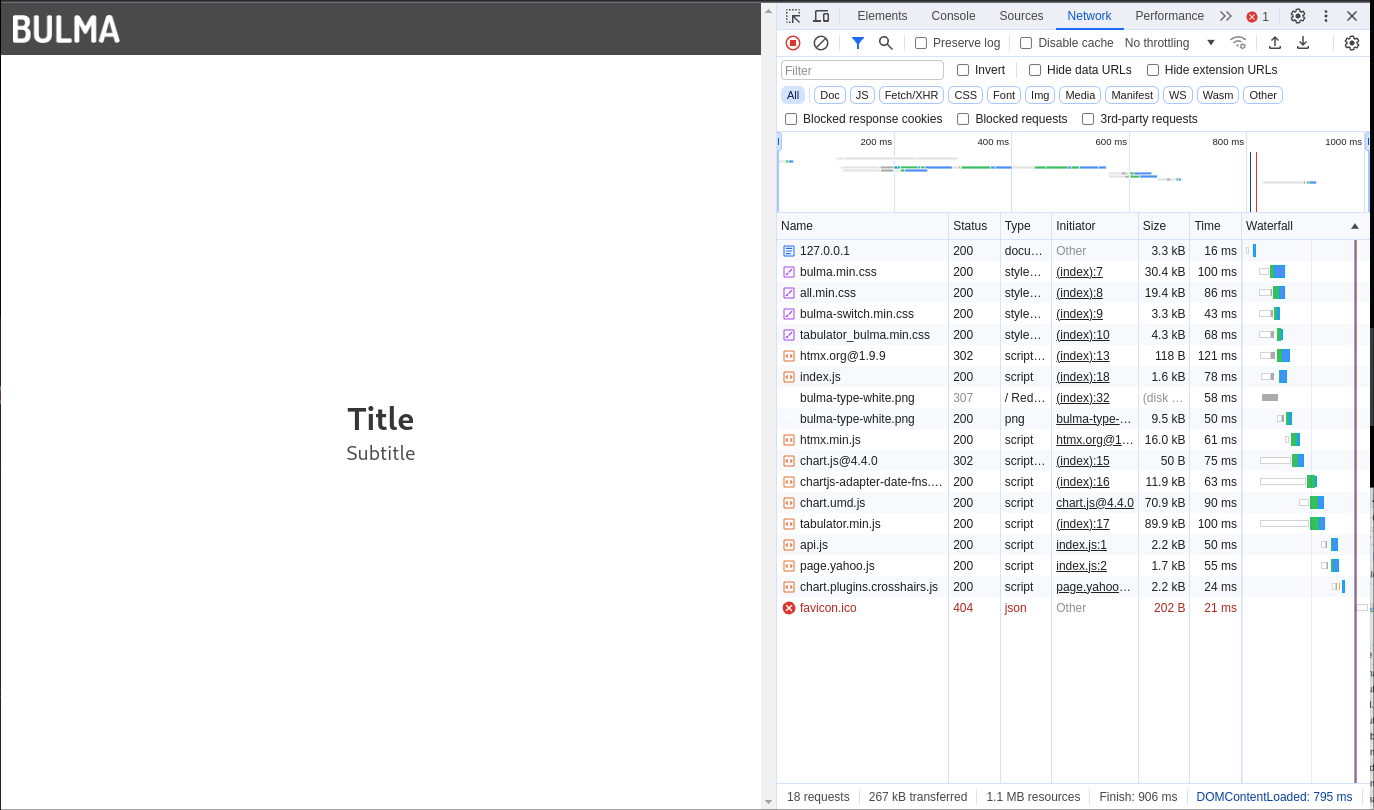 Flask static page performance
Flask static page performance
The absolute time it takes for Axum to serve its assets to the browser was typically ~4-20x compared to Flask. This can be seen by comparing the Waiting for server response time values. This difference is reduced to ~2-5x when factoring in the downloading and processing of the assets by the browser. It is further reduced when considering the page as a whole to include external assets.
As a whole, page loads were similar between the frameworks, with the range of response times overlapping between ~700-900ms.
slightly more, cpu-“intensive” page
This page is not remotely cpu-bound but it does more than the static page. It presents three datasets: one taken from a 485KB csv, another from a 600B csv and lastly, one that is just randomly generated. Arguably, the most intensive aspect is on the browser to render the data. The data is retrieved through AJAX calls after page load.
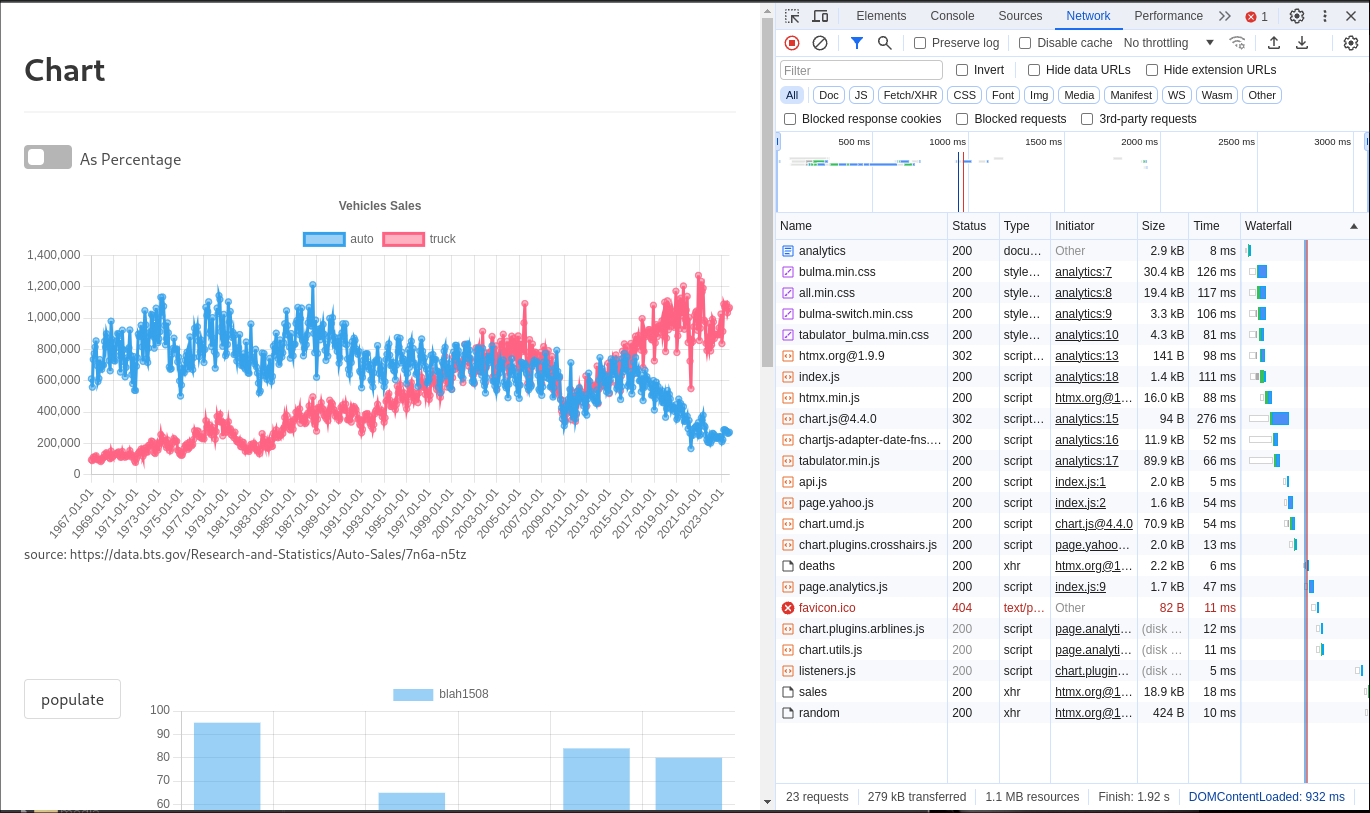 Axum analytics page performance
Axum analytics page performance
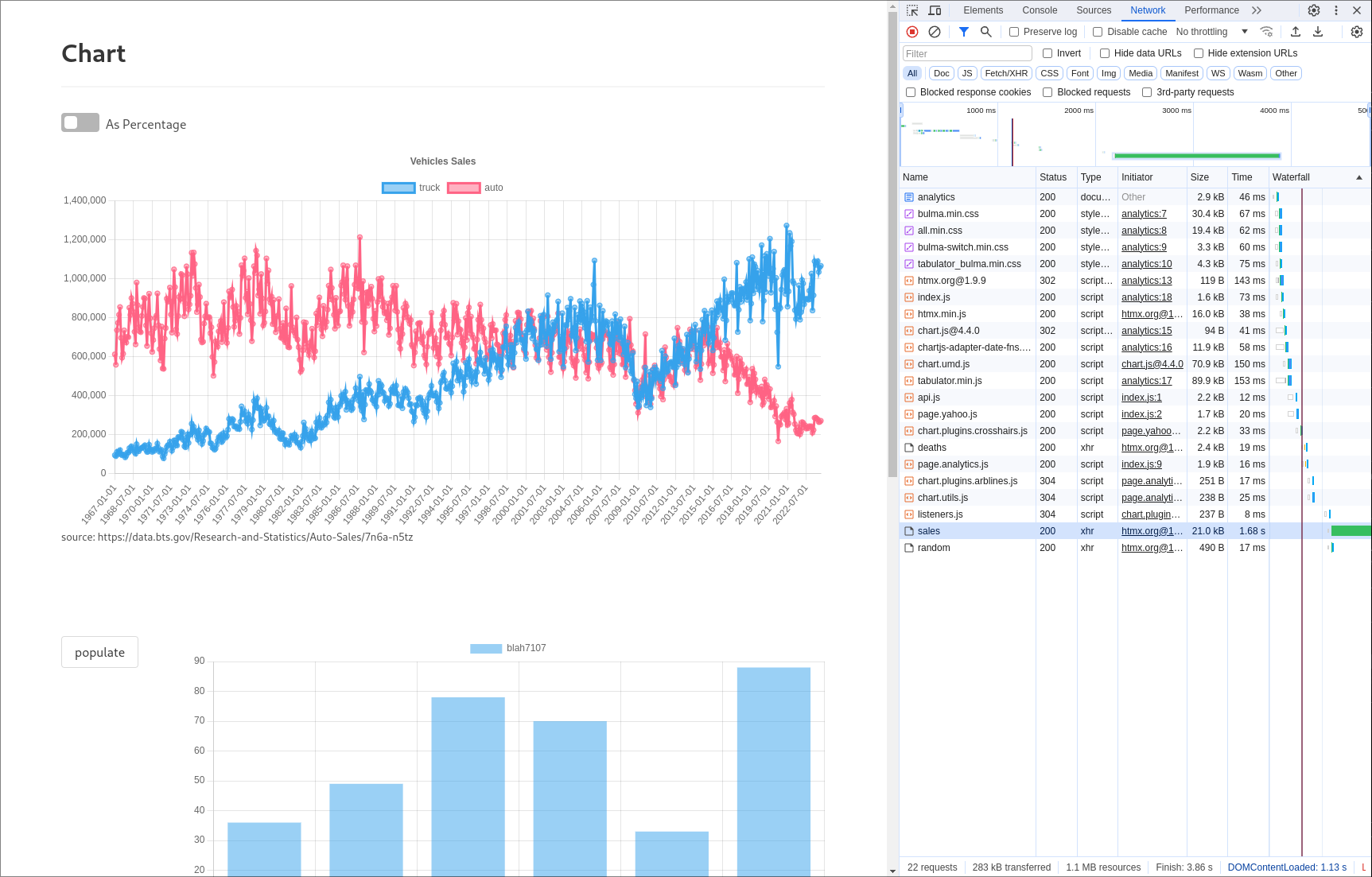 Flask analytics page performance
Flask analytics page performance
On this page, Axum performed noticeably better, objectively and subjectively. Retrieving static page assets performed similarly to the land page results. When considering the content loaded via api requests, they generally returned ~2-100x faster in Axum.
For the full page, Axum rendered the page ~1-2x faster. In absolute terms, it would render up to 1.2s faster. On some occassions, Flask could complete as quickly but normally, Axum performed noticably better. In Axum, the “loading” dialog would rarely be visible where as in Flask, the loading was always present.
The app also provides this page as a SPA rather than loading the entire page. In this scenario, the results are similar where Axum typically loaded the page ~300ms quicker.
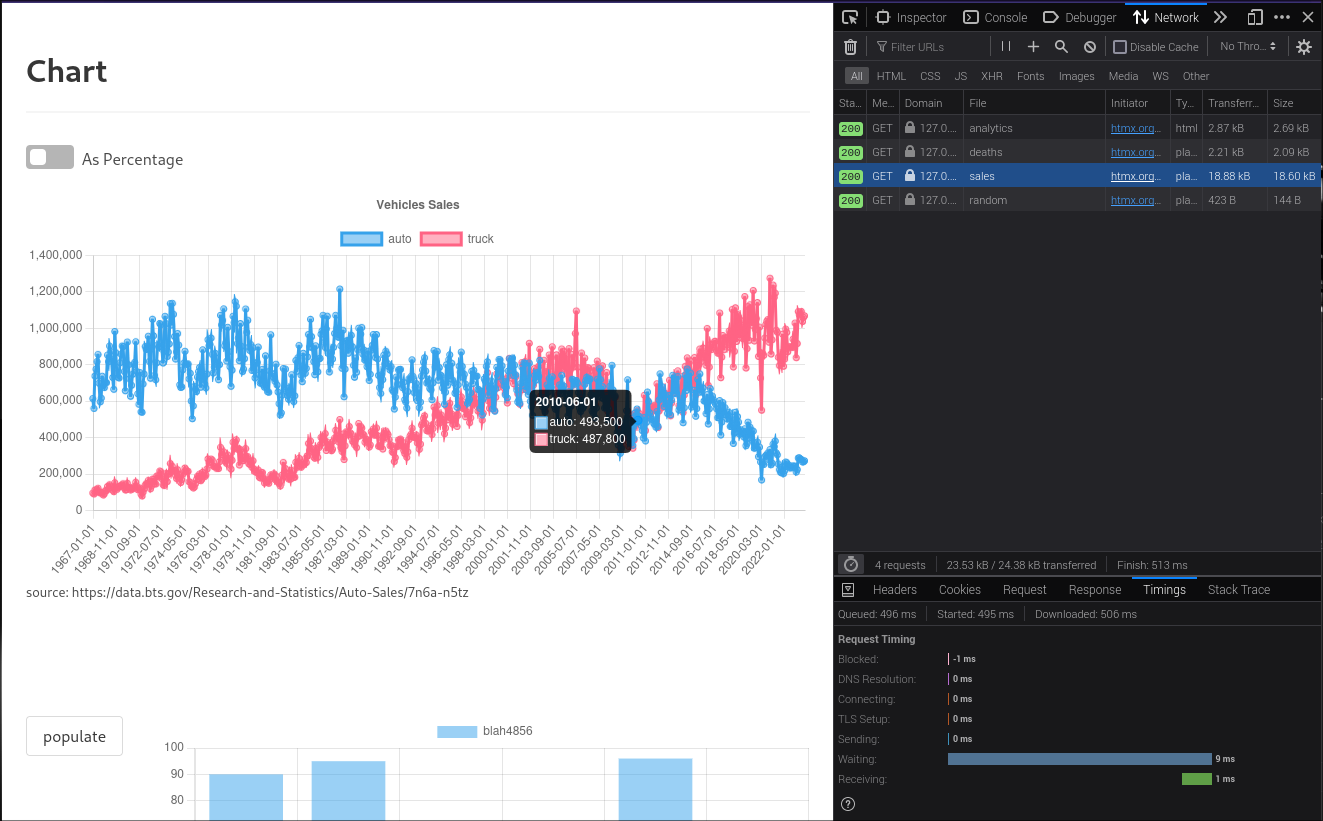 Axum analytics SPA performance
Axum analytics SPA performance
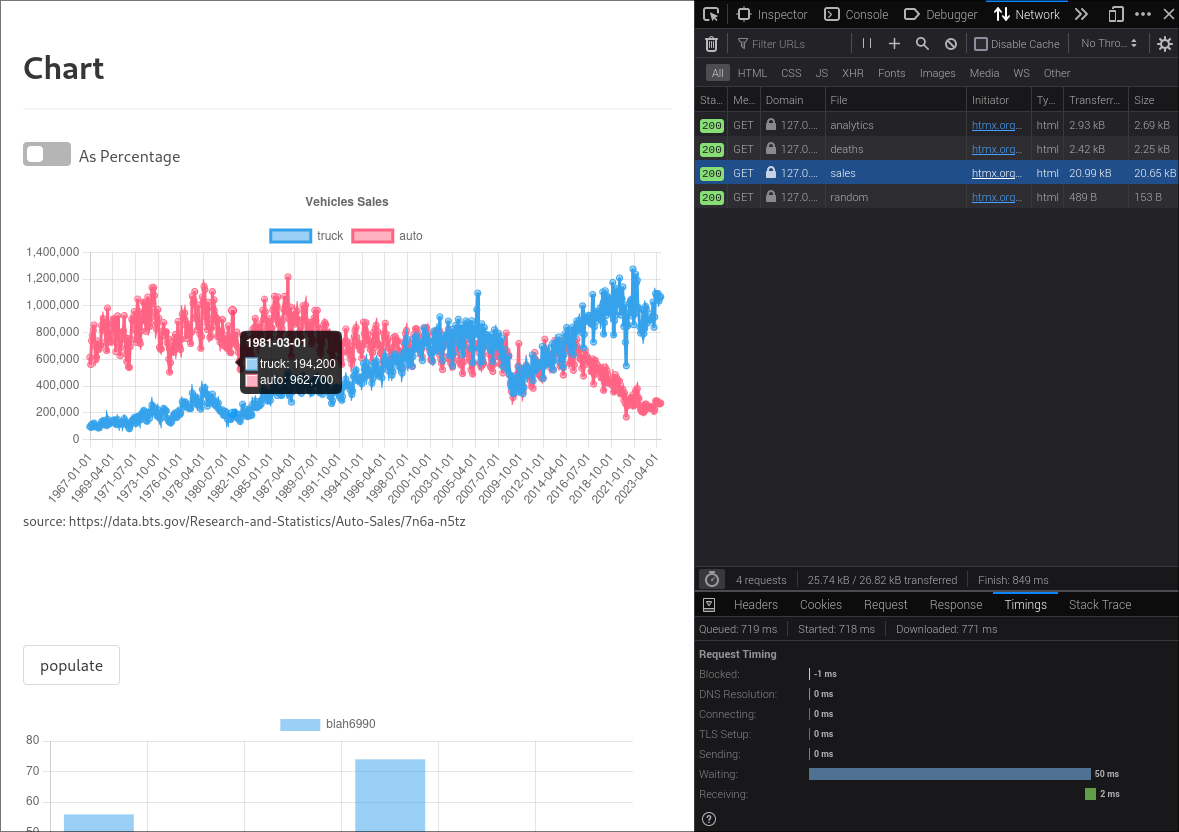 Flask analytics SPA performance
Flask analytics SPA performance
io-intensive page
The last page the sample app provides is a similar charting page that allows you to input a stock ticker and it will query Yahoo Finance for the data. For the purposes of benchmarking, I am treating the query to Yahoo as a query to a extremely distant/slow database.
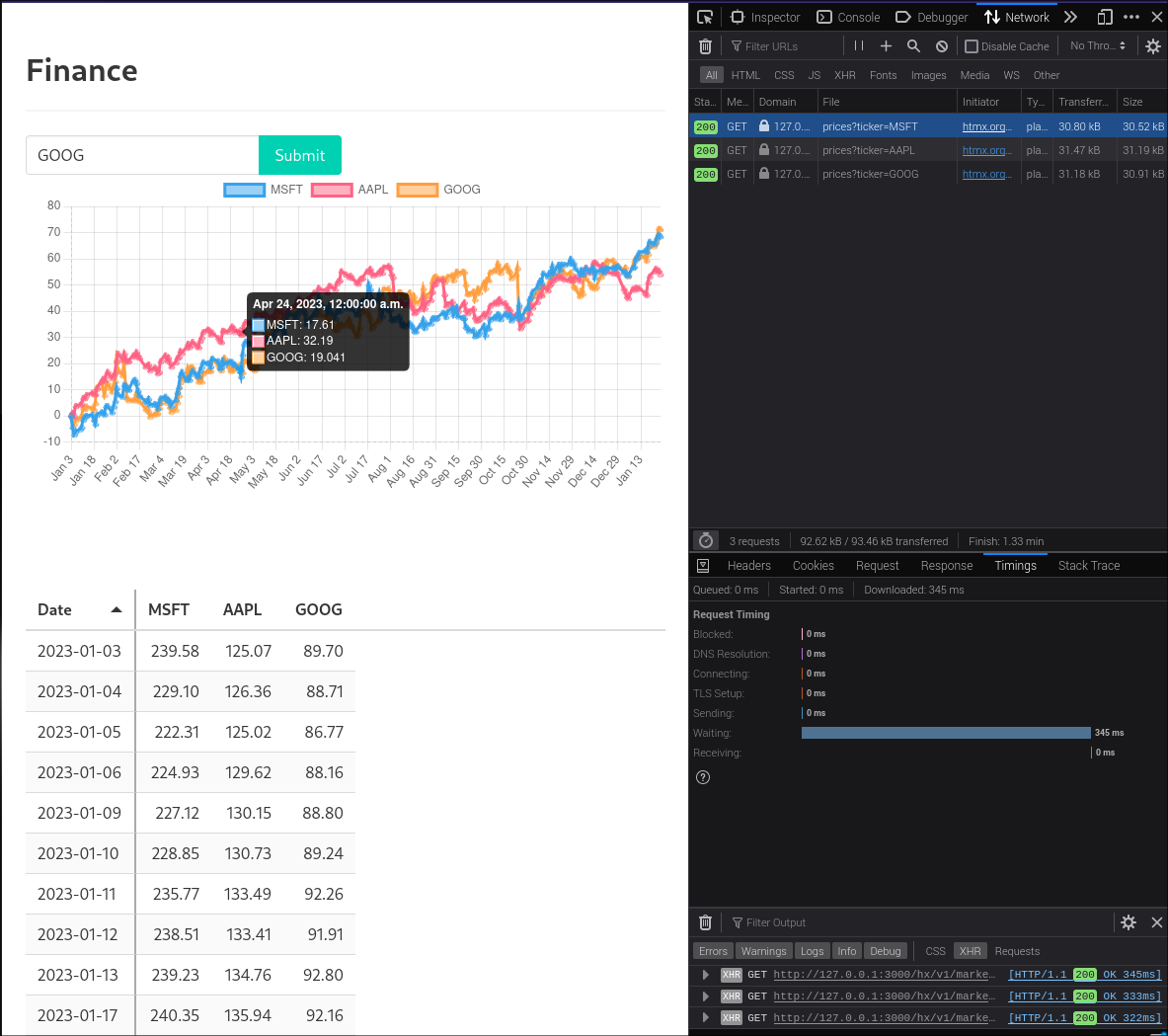 Axum io-heavy page performance
Axum io-heavy page performance
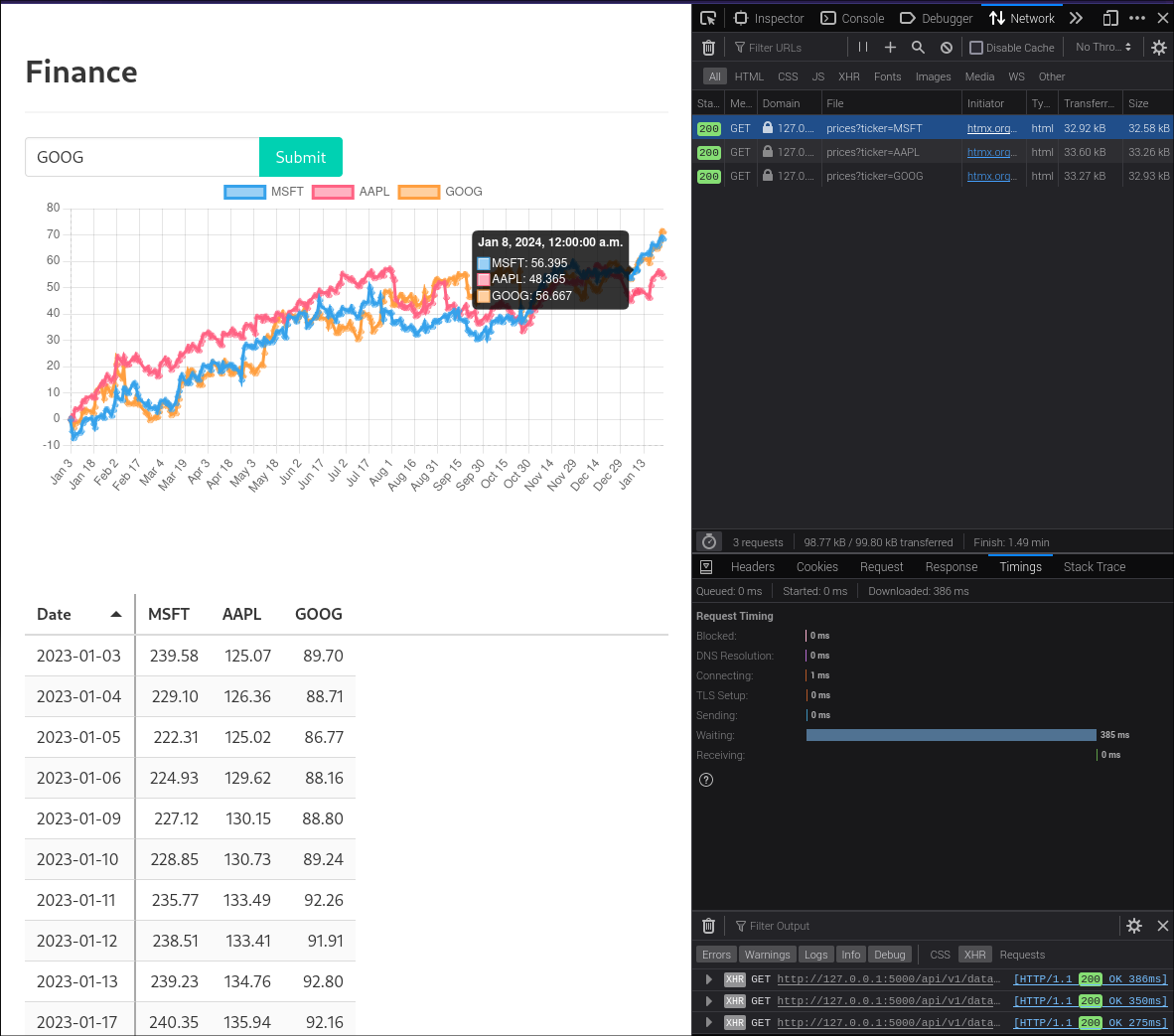 Flask io-heavy page performance
Flask io-heavy page performance
In this case, the response of both Axum and Flask are comparable. In theory, Axum should be able to queue more requests but any performance gains would be assuming the “database” has the capacity to handle load.
api
Removing the browser and testing the web frameworks programmatically yields varied results but none that return in 85x improvements.
Testing the random api endpoint which effectively just generates a list of random numbers, Axum performed ~20% better, averaging 0.8ms faster response time per request.

Testing the vehicle sales api endpoint which reads and processes a small csv, Axum performed ~4x better, averaging 12ms faster response time per request.

Testing the financial api endpoint which calls Yahoo api, Axum performed ~5x worse. I imagine this is due to the usage of synchronous calls.

system resources
Finally, factoring in the scalability of each framework. Running Flask with 4 workers, under load required, ~600MB of memory and all the CPUs fully utilised.
Comparatively, Axum required ~60MB of memory to do the same task and it never fully saturated the CPUs meaning we had ability to handle significantly more capacity.
apologies on screenshots, i use transparent terminal background because i’m a monster



side notes
- the Rust ecosystem is arguably mature enough to be adopted
- there is something weird with polars but it takes forever to compile. on a pi, it takes 3+ mins to incrementally cargo run and 40+ mins to cargo build
- a good chunk of python’s memory usage is related to pyarrow library. it is inexplicably large
- reqwest in Rust will make you appreciate requests in Python. reqwest is not fun
- the timings above were run off the Pi where performance inefficiencies were greatly exaggerated. visiting the pages via my mobile devices made the differences imperceptible.
- even a 1.2 second performance difference is negligble in the modern web. see below:
